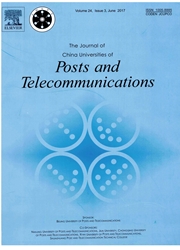

 中文摘要:
中文摘要:
由于费用和收音机频率(RF ) 的电源消费锁住的高度,在毫米波浪(mmWave ) 实现完整的数字 beamforming 是困难的多重输入多重产量(MIMO ) 系统。幸好,混合 beamforming (HBF ) 被建议由切开在模拟、数字的领域之间的 beamforming 过程克服这些限制。在最近的工作,大多数 HBF 计划改善光谱效率基于贪婪算法。然而,在贪婪算法的反复的过程导致高计算的复杂性。在这份报纸,一个新方法被建议完成在复杂性和表演之间的合理妥协。新奇算法利用低复杂性的 Gram-Schmidt 方法到 orthogonalize 候选人向量。与直角的候选人矩阵,慢贪婪的算法被避免。因此,没有任何重复, RF 向量同时被发现。另外,阶段抽取被使用在 RF 矩阵上满足元素明智的经常大小的限制。当维持好性能时,模拟结果证明新 HBF 算法能在复杂性做实质的改进。
 英文摘要:
英文摘要:
Due to the high cost and power consumption of the radio frequency(RF) chains, it is difficult to implement the full digital beamforming in millimeter-wave(mm Wave) multiple-input multiple-output(MIMO) systems. Fortunately, the hybrid beamforming(HBF) is proposed to overcome these limitations by splitting the beamforming process between the analog and digital domains. In recent works, most HBF schemes improve the spectral efficiency based on greedy algorithms. However, the iterative process in greedy algorithms leads to high computational complexity. In this paper, a new method is proposed to achieve a reasonable compromise between complexity and performance. The novel algorithm utilizes the low-complexity Gram-Schmidt method to orthogonalize the candidate vectors. With the orthogonal candidate matrix, the slow greedy algorithm is avoided. Thus, the RF vectors are found simultaneously without any iteration. Additionally, the phase extraction is applied to satisfy the element-wise constant-magnitude constraint on the RF matrix. Simulation results demonstrate that the new HBF algorithm can make substantial improvements in complexity while maintaining good performance.
 同期刊论文项目
同期刊论文项目
 同项目期刊论文
同项目期刊论文
 期刊信息
期刊信息
